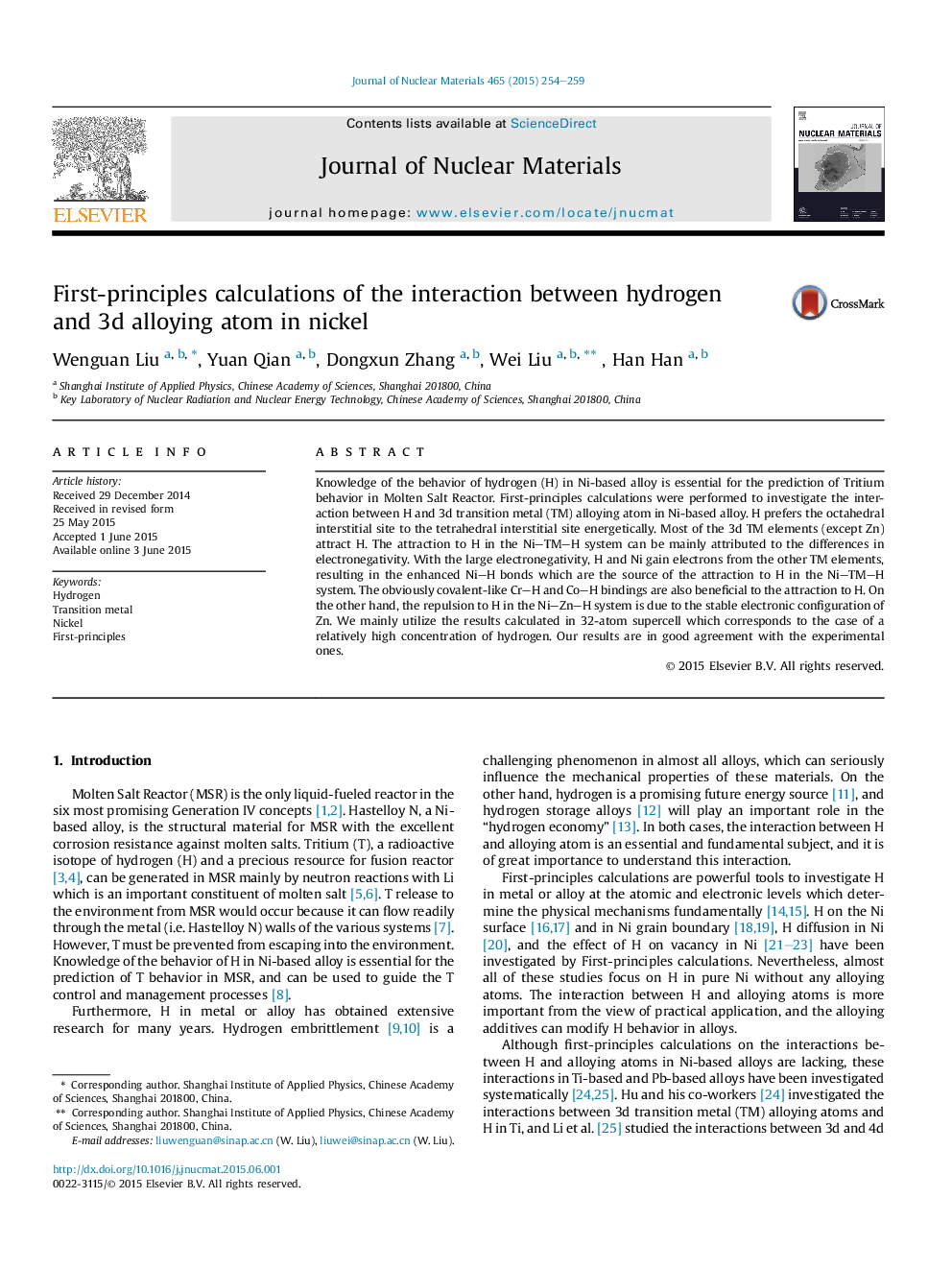| Article ID | Journal | Published Year | Pages | File Type |
|---|---|---|---|---|
| 7965245 | Journal of Nuclear Materials | 2015 | 6 Pages |
Abstract
Knowledge of the behavior of hydrogen (H) in Ni-based alloy is essential for the prediction of Tritium behavior in Molten Salt Reactor. First-principles calculations were performed to investigate the interaction between H and 3d transition metal (TM) alloying atom in Ni-based alloy. H prefers the octahedral interstitial site to the tetrahedral interstitial site energetically. Most of the 3d TM elements (except Zn) attract H. The attraction to H in the Ni-TM-H system can be mainly attributed to the differences in electronegativity. With the large electronegativity, H and Ni gain electrons from the other TM elements, resulting in the enhanced Ni-H bonds which are the source of the attraction to H in the Ni-TM-H system. The obviously covalent-like Cr-H and Co-H bindings are also beneficial to the attraction to H. On the other hand, the repulsion to H in the Ni-Zn-H system is due to the stable electronic configuration of Zn. We mainly utilize the results calculated in 32-atom supercell which corresponds to the case of a relatively high concentration of hydrogen. Our results are in good agreement with the experimental ones.
Related Topics
Physical Sciences and Engineering
Energy
Nuclear Energy and Engineering
Authors
Wenguan Liu, Yuan Qian, Dongxun Zhang, Wei Liu, Han Han,
